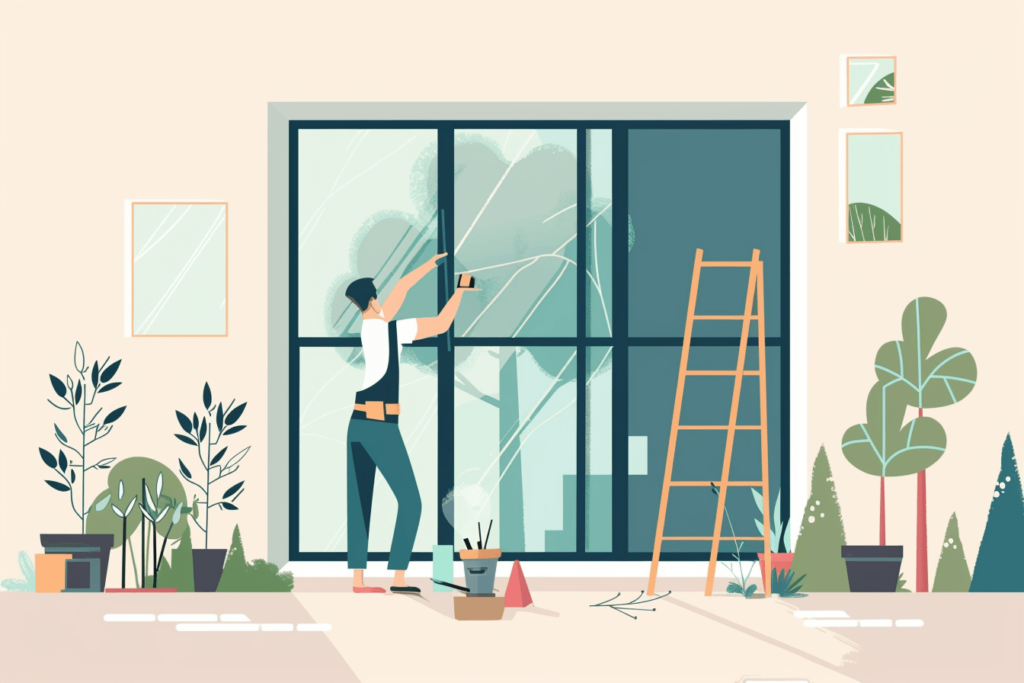Maintaining your home’s windows is essential for longevity, enhancing energy efficiency, and keeping your living space comfortable and well-lit. While professional help might be necessary for major repairs or replacements, homeowners can utilize several DIY window maintenance tips to keep their windows in top shape.
Here’s a guide to DIY window maintenance to keep your windows lasting for years.
Understanding the Importance of Window Maintenance
Windows are crucial in your home’s aesthetic appeal and energy efficiency. Well-maintained windows can prevent air leaks, reduce energy bills, and increase the overall value of your property. Regular maintenance can also prevent minor issues from turning into costly repairs.
Regular Cleaning
Like anything in your life, regular maintenance and cleaning can do wonders for the longevity. Here are a few best practices to keep in mind with regular window cleaning.
Glass Cleaning: To keep your windows sparkling clean, use a mixture of vinegar and water or a commercial glass cleaner. Cleaning in direct sunlight can cause streaks, so it is best to avoid doing it during that time. For best results, use a microfiber cloth or squeegee.
Frame and Sill Cleaning: Dust and debris tend to accumulate on window sills and frames, which can hinder the window’s operation and drainage system. Clean these areas with a soft brush and soapy water. A mild detergent is sufficient for vinyl or aluminum frames. For wooden frames, use a cleaner that won’t damage the finish.
Inspecting and Replacing Weatherstripping
Weatherstripping around windows helps to seal air leaks, enhancing your home’s energy efficiency. Inspect the weatherstripping at least once a year and replace it if it’s worn out or damaged. Foam tape and felt are easy to install and are effective for blocking drafts.
Caulking Gaps
Inspect the caulking around your window frames annually, especially before winter. Caulking can crack and shrink over time, leading to air and water leaks. Remove old caulking with a putty knife and apply a new bead of silicone caulk for a waterproof seal.
Lubricating Moving Parts
Windows with moving parts, such as casement or sliding windows, require regular lubrication to operate smoothly. Use a silicone-based lubricant on tracks, hinges, and any metal moving parts. Avoid using oil-based lubricants as they can attract dirt and debris.
Checking for and Repairing Damage
There are a few things you can do regularly to make sure your windows are in good shape before waiting too long and having to replace them completely.
Glass Cracks: Small cracks in the window glass can be temporarily fixed with clear nail polish or glass adhesive as a short-term solution until replacement can occur.
Wood Rot: Wooden window frames are prone to rot. Inspect your frames for soft spots or discoloration. Minor rot can be treated with wood hardener and epoxy. Severe rot may require the damaged section to be cut out and replaced.
Paint and Seal: Peeling paint exposes wood frames to the elements, leading to rot and damage. Sand the frames lightly and apply a fresh coat of paint or sealant to ensure they are protected.
Enhancing Window Insulation

Improving your windows’ insulation can significantly impact your home’s energy efficiency. Consider using insulating window film or thermal curtains during colder months to keep heat in. In warmer months, reflective films or shades can help block out heat from the sun.
Managing Condensation
Condensation between double-glazed windows indicates a seal failure, which requires professional repair. However, reducing indoor humidity can prevent condensation on the inside of windows.
Use exhaust fans in kitchens and bathrooms, and consider using a dehumidifier in humid climates.
Safety Considerations
When performing window maintenance, prioritize safety, especially when working with second-story windows. Use a stable ladder, and never lean out of an open window. Consult a professional for extensive repairs, especially those involving glass replacement or structural work.
Conclusion
DIY window maintenance is a manageable task that can significantly contribute to your home’s comfort, energy efficiency, and appearance. By incorporating these maintenance tips into your regular home care routine, you can extend the life of your windows and avoid costly repairs.
Regular cleaning, inspecting for damage, and ensuring proper insulation are key steps in maintaining your windows. Remember, while many maintenance tasks are suitable for DIY, don’t hesitate to call in professionals for more complex repairs or when safety concerns arise.
Taking care of your windows improves your immediate living environment and contributes to your home’s overall value and sustainability.
You might also be interested in: 10 Signs It’s Time To Replace Your Windows




